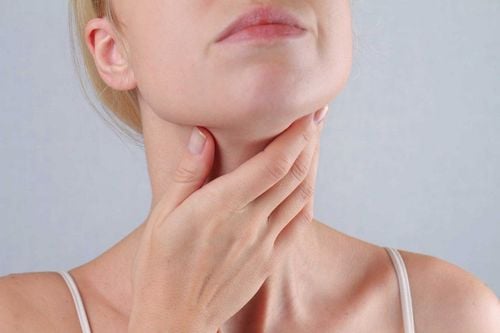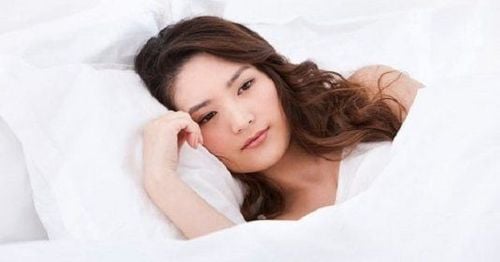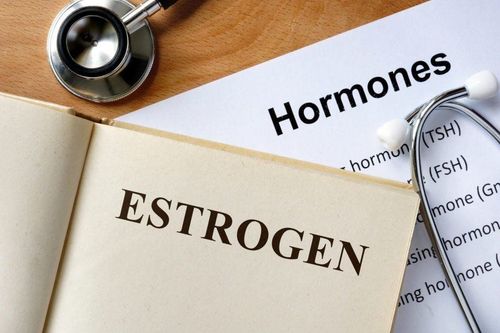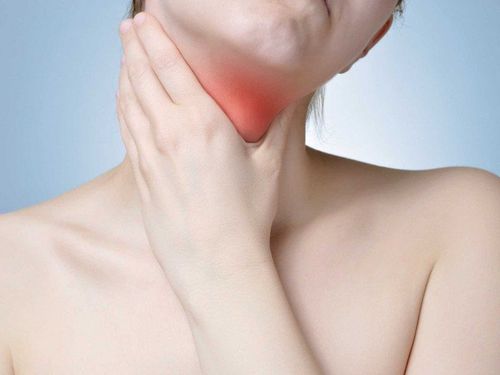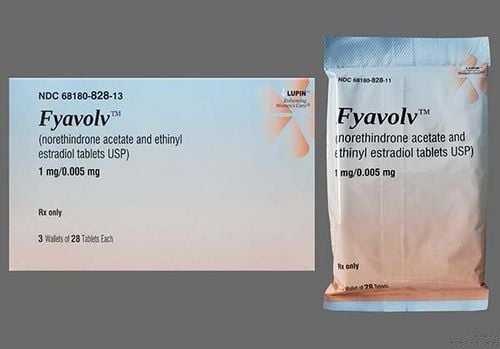This is an automatically translated article.
During menopause, the body's natural estrogen levels drop drastically, causing serious conditions like menstrual irregularities, difficulty conceiving, vaginal dryness, a weakened immune system, and overall health. women. Estrogen therapy is considered an effective solution to treat these symptoms.1. What is estrogen therapy?
Estrogen therapy Doctors often recommend a low dose of estrogen for women who have had a hysterectomy. Estrogen comes in different forms such as vaginal rings, gels, sprays, pills or patches, with the daily pill and patch being the most common.
Estrogen pills: This is the most common treatment for menopausal symptoms. Several forms of the drug are available including conjugated estrogens (Cenestin, Estrace, Estratab, Femtrace, Ogen, and Premarin) or estrogen-bazedoxifene (Duavee). You should strictly follow the instructions of your doctor when using the drug to avoid causing unwanted side effects. Most estrogen pills are taken once a day. Some have more complicated dosing schedules.
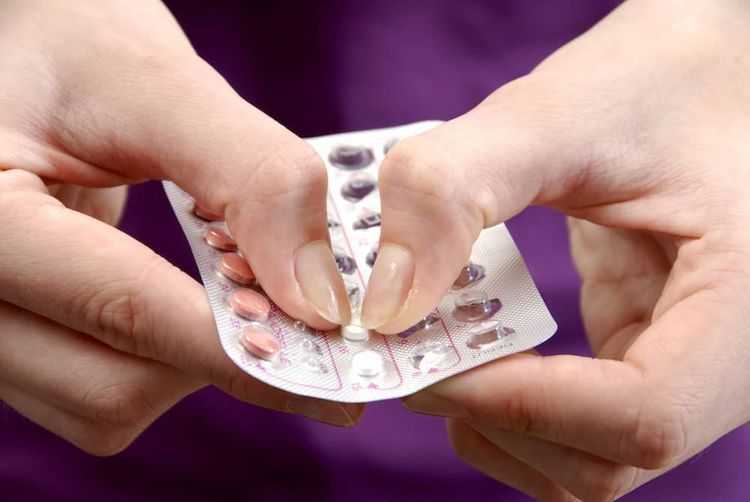
Tham khảo ý kiến bác sĩ trước khi dùng thuốc
Estrogen patch : The patch is placed on the skin of your abdomen. Depending on the dose, some patches are replaced every few days, while others can be worn for a week, eg Alora, Climara, Esttraderm and Vivelle-Dot. Menostar has a lower dose of estrogen than other patches and it is only used to reduce the risk of osteoporosis. It is not effective in treating other menopausal symptoms. Topical estrogen: Topical estrogen therapy uses forms including creams, gels, and sprays. Examples are gels (like Estroge and Divigell), creams (like Estrasorb) and sprays (like Evamist). Like the patch, this type of estrogen treatment is absorbed through the skin directly into the bloodstream and taken once a day. Estrogel is applied on areas such as the arms, from the wrists to the shoulders. Estrasorb is applied to the legs. Evamist is applied to the arm. Vaginal estrogen: Vaginal estrogen comes in the form of a cream, vaginal ring, or vaginal estrogen pill. In general, these treatments are for women who have vaginal problems, especially vaginal dryness, itching, burning, or pain during intercourse. Namely: vaginal tablets (Vagifem), cream (Estrace or Premarin) and vaginal rings (Eopes or Femring). The dosage schedule for this therapy is different and depends on the product. Most vaginal rings need to be replaced every three months. Vaginal tablets are usually used daily for a few weeks; you can then reduce the dose to about twice a week. The cream can be used daily, several times a week, or on a regular schedule.
Estrogen/Progesterone/Progestin hormone therapy

Liệu pháp estrogen kết hợp với progesterone giúp làm giảm nguy cơ ung thư nội mạc tử cung, niêm mạc tử cung
Estrogen/progesterone/progestin hormone therapy is also called combination therapy, because it combines doses of estrogen and progestin - a synthetic form of progesterone. This combination therapy is usually for women who have not had a hysterectomy. Taking estrogen in combination with progesterone helps reduce the risk of endometrial cancer, the lining of the uterus.
In addition, this therapy is also used as an effective form of birth control. Progesterone can help treat many menopausal symptoms such as hot flashes, night sweats, trouble sleeping,...
Oral Progestin: Taken as a pill, progestin pills include medroxyprogesterone acetate (Provera) and pills. synthetic progestins (norethindrone, norgestrel). Many professionals now treat the majority of their menopausal patients with natural progesterone instead of synthetic progestin. Natural progesterone has no negative effects on lipids and is a good choice for women with high cholesterol levels. Intrauterine Progestin: This is a method of using an intrauterine device (IUD) as you enter menopause. Doctors usually recommend that you keep these IUDs in place until menopause ends.
2. Why should estrogen therapy be used?
Entering the age of menopause, the amount of estrogen decreases more and more, causing a serious shortage of estrogen, so the body requires replacement estrogen to minimize and prevent disorders caused by lack of estrogen. .
Estrogen therapy helps relieve vasomotor symptoms, skin, atrophy in the urogenital system and is very good for the skeletal system. It also reduces porosity and bone loss, avoiding fractures.
In addition, it is also beneficial for the cardiovascular system, limiting hypertension, atherosclerosis. In addition, estrogen supplementation has many other positive benefits such as increased brain perfusion, increased sex drive, enhanced memory and reduced risk of Alzheimer's disease.
Estrogen therapy is often indicated for the following conditions: After oophorectomy, perimenopausal and menopausal disorders, delayed puberty, treatment of menstrual disorders, treatment of virilization (beard growth in women) , acne), treatment of prostate cancer.
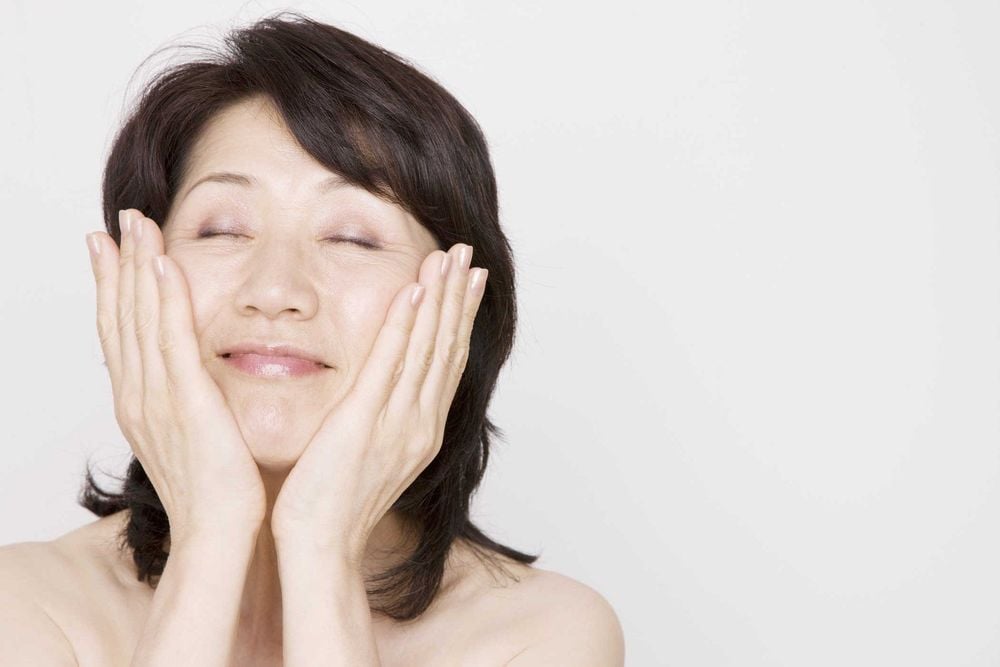
Liệu pháp estrogen có chức năng lớn đối với phụ nữ tuổi mãn kinh
3. Principles of using estrogen therapy
You should clearly understand, the purpose of using estrogen therapy is only to help improve quality of life, not to have the effect of “reversing aging completely. That is, taking estrogen cannot make the body as young as it was when it was young. Depending on each different user, the treatment effect is also different, this therapy must be persistently used for a long time, not having miraculous effects in a short period of time. You should take estrogen therapy continuously and possibly in combination with progesterone for at least 10 days/month (average 10-14 days). You should start using it early in the transition to menopause.
It should be noted that, do not use mass estrogen therapy for menopausal women, but only for cases with severe uncomfortable symptoms that cannot be overcome on their own. Especially when using estrogen, the patient should consult a specialist to see if it is necessary to take estrogen replacement therapy. If treatment is required, a careful clinical examination is required, except in those with high cancer risk and contraindications to estrogen use. You should also be carefully and closely monitored through regular physical examination or laboratory tests.
Cases that are not allowed to use estrogen therapy, including:
People in the family have a grandmother, mother, sister or brother with cervical cancer, breast cancer. People with unexplained vaginal bleeding People with uterine, cervical, ovarian tumors Have liver and biliary diseases Are pregnant Have benign or malignant tumors in the breast Have endometriosis People with Cardiovascular disease Cerebrovascular accident Diabetes, high blood pressure Lupus erythematosus
4. Risks of using estrogen therapy

Trao đổi với bác sĩ về liệu pháp estrogen nhằm tránh các rủi ro không đáng có
Estrogen therapy is a double-edged sword, besides the benefits, it also comes with many unwanted side effects for the patient. If you do not follow the instructions of the doctor and use it for a long time, it can cause serious consequences such as:
Endometrial hyperplasia Risk of endometrial cancer breast disease such as pain, erection, and breast cancer Increases blood pressure Increases blood clots Increases pigmentation and darkening Although estrogen is effective in bone regeneration and prevention of osteoporosis during menopause, However, it also accelerates the ossification of the ends of bones. During the period of bone growth (under 20 years old), long-term use of estrogens (in drugs to treat puberty delay or birth control pills) will make the ends of the bones rapidly ossify, making it difficult to grow taller.
When using high doses of estrogen, reverse inhibitors cause the body to stop producing estrogen, eggs do not develop and do not attach to the lining of the uterus, thereby preventing conception and stopping milk secretion. In men, high doses can cause testicular atrophy, cessation of sperm production and atrophy of the external genitalia. Some side effects when taking estrogen supplements such as breast tenderness, headache, nausea, jaundice, cholestasis, hypercalcemia, weight gain, gynecomastia and decreased sex drive in men.
Please dial HOTLINE for more information or register for an appointment HERE. Download MyVinmec app to make appointments faster and to manage your bookings easily.
Article reference source: Webmd.com



